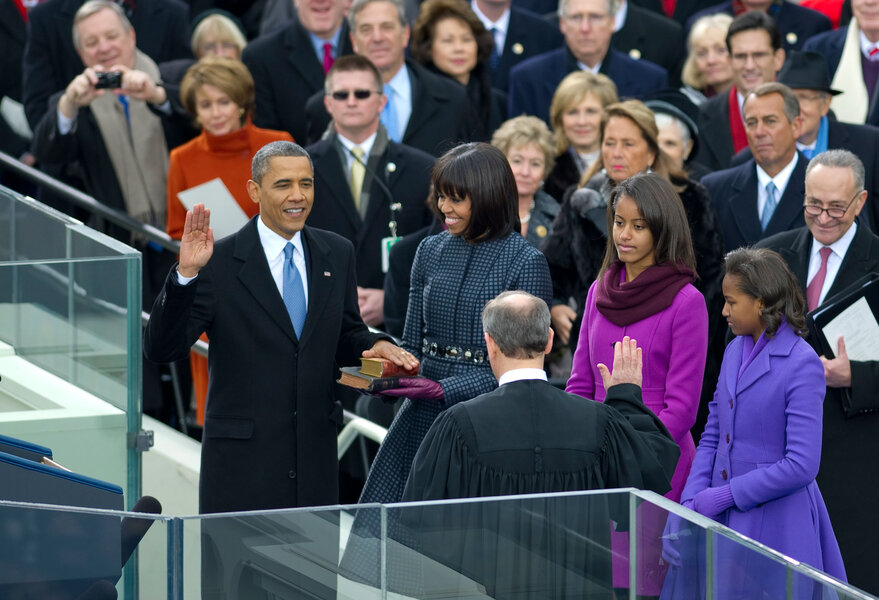Inauguration Day is one year away. Why is it in winter?
Loading...
The United States inaugurates its presidents in the cold – and possible ice and snow – of the dead of winter. Why is that?
Blame the Civil War, the Great Depression, and the Constitution.
Yes, it’s the current page in the calendar that brought this question to mind. Inauguration Day 2017 is now exactly one year away. The slam-bang voting process that begins with the Iowa caucuses will produce a president-elect in only 42 weeks, approximately.
Then we’ll get to see the pomp and glory of a presidential swearing-in, outdoors, on the West Front of the Capitol. The pomp, glory, and shivering: Washington is not the Arctic, but the average temperature in the city in January is still only about 36 degrees.
(Fun fact: Ronald Reagan holds the record for both the warmest and coldest January inaugurals on record. At his first, the noontime temperature was 55 degrees. At his second, it was 7.)
Yet Inauguration Day used to be in the spring. OK, early spring – March 4, the day on which the Constitution took effect in 1789. That’s quite pleasant in the Washington area, usually. Early flowers are out. There’s a hint of warmth on the wind.
The problem is that March 4 is some four months after Election Day. That didn’t matter in the early republic, but as the US got bigger, and its problems more involved, the lag time became a problem. Lame-duck presidents and members of Congress had little incentive to make tough decisions in tough times. So they didn’t.
Following the election of 1860, Abraham Lincoln had to wait an interminable time before he could grapple with the rise of Southern secession sentiment. He grew a beard to help pass the time. Franklin D. Roosevelt had a similar problem in 1932 and ’33. He declined to work with incumbent Herbert Hoover on the spiraling Depression. He waited until he could act on his own.
But FDR’s first inaugural was the last held in March. In January 1933, the requisite number of states ratified the 20th Amendment to the Constitution, which moved the beginning of presidential terms to Jan. 20, and the convening of Congress to Jan. 3.
Nicknamed the “Lame Duck Amendment,” the 20th Amendment was a popular change, as seen in the fact that it was ratified by the requisite three quarters of the states in less than a year. Virginia moved so quickly that it ratified the amendment before it received an official copy of the proposal.
Upon its passage, Sen. George Norris of Nebraska, an amendment backer, said that by speeding up the seating of election victors, the move was “a great step toward placing the control of our government in the hands of the chosen representatives of the American people.”
Thus it came about that FDR was the first president inaugurated on Jan. 20, for his second term. It was 33 degrees at noon that day. And sleeting.








